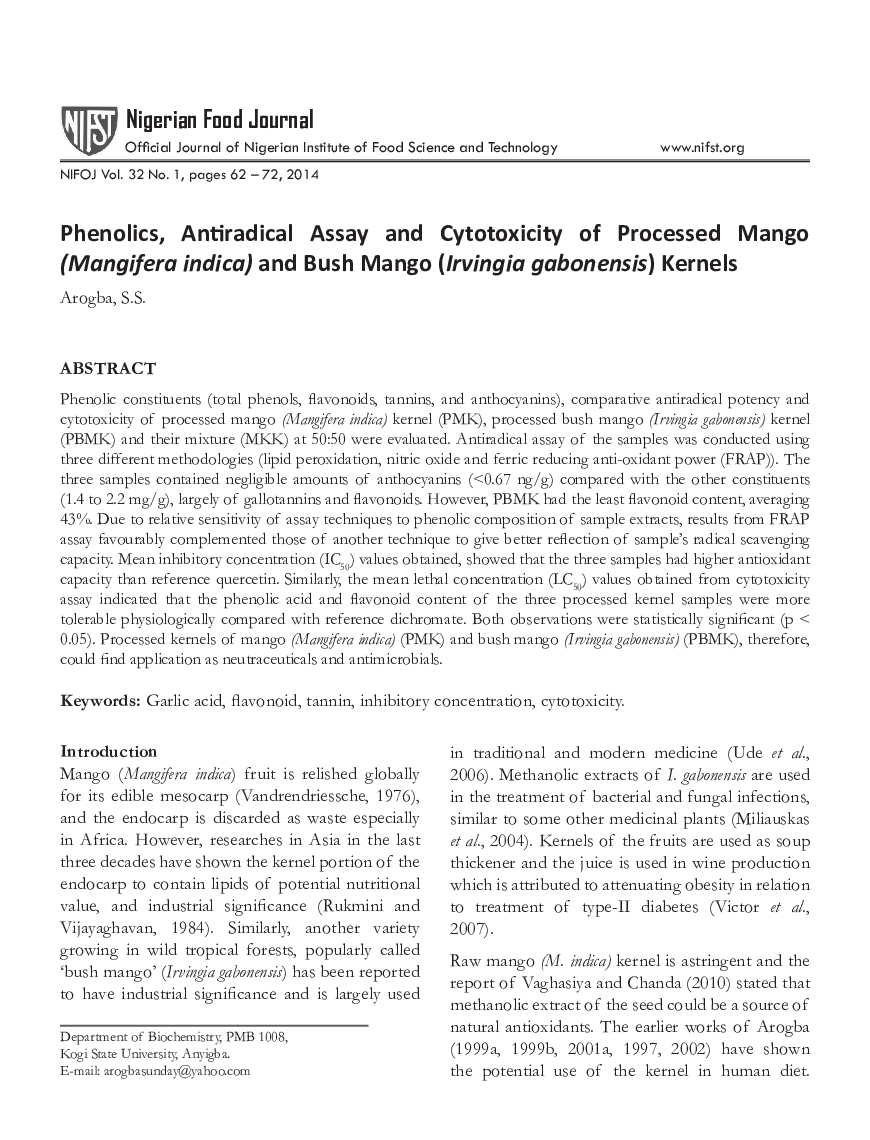| Article ID | Journal | Published Year | Pages | File Type |
|---|---|---|---|---|
| 4565705 | Nigerian Food Journal | 2014 | 11 Pages |
ABSTRACTPhenolic constituents (total phenols, flavonoids, tannins, and anthocyanins), comparative antiradical potency and cytotoxicity of processed mango (Mangifera indica) kernel (PMK), processed bush mango (Irvingia gabonensis) kernel (PBMK) and their mixture (MKK) at 50:50 were evaluated. Antiradical assay of the samples was conducted using three different methodologies (lipid peroxidation, nitric oxide and ferric reducing anti-oxidant power (FRAP)). The three samples contained negligible amounts of anthocyanins (< 0.67 ng/g) compared with the other constituents (1.4 to 2.2 mg/g), largely of gallotannins and flavonoids. However, PBMK had the least flavonoid content, averaging 43%. Due to relative sensitivity of assay techniques to phenolic composition of sample extracts, results from FRAP assay favourably complemented those of another technique to give better reflection of sample’s radical scavenging capacity. Mean inhibitory concentration (IC50) values obtained, showed that the three samples had higher antioxidant capacity than reference quercetin. Similarly, the mean lethal concentration (LC50) values obtained from cytotoxicity assay indicated that the phenolic acid and flavonoid content of the three processed kernel samples were more tolerable physiologically compared with reference dichromate. Both observations were statistically significant (p < 0.05). Processed kernels of mango (Mangifera indica) (PMK) and bush mango (Irvingiagabonensis) (PBMK), therefore, could find application as neutraceuticals and antimicrobials.
